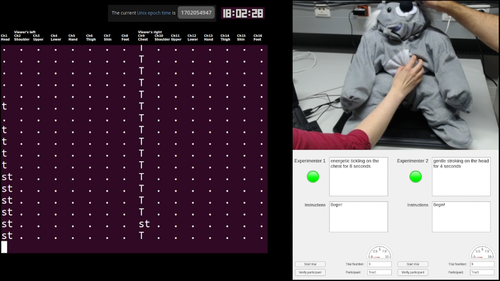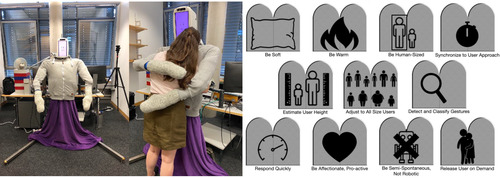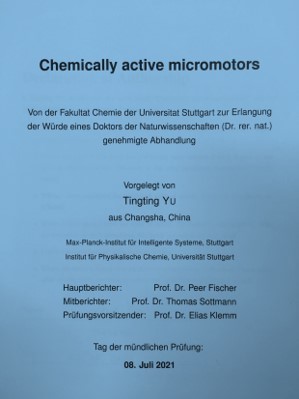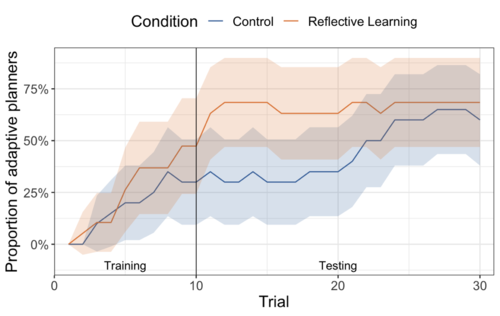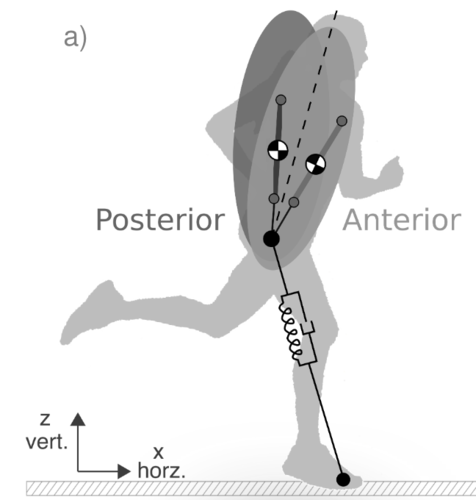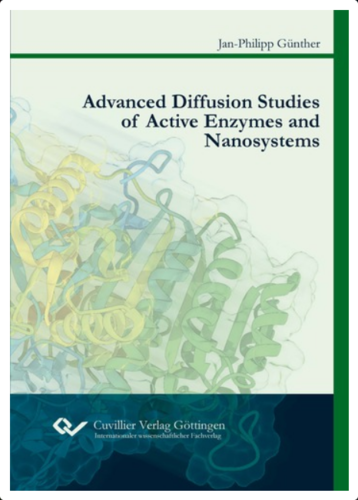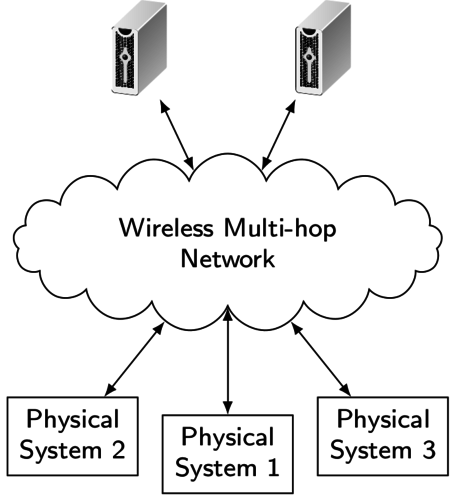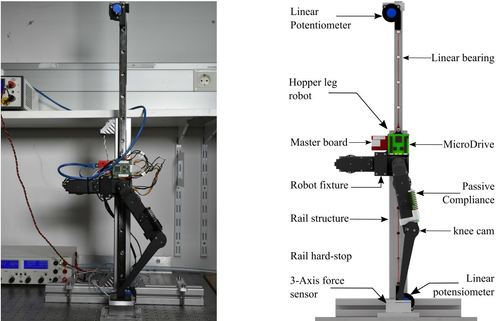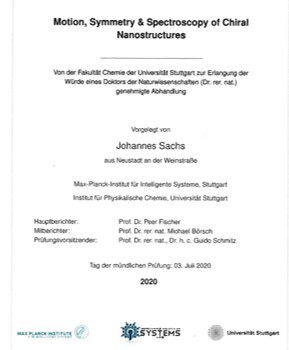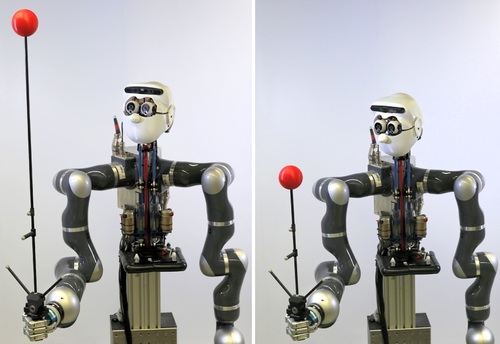2024
ei
von Kügelgen, J.
Identifiable Causal Representation Learning
University of Cambridge, UK, Cambridge, February 2024, (Cambridge-Tübingen-Fellowship) (phdthesis)
hi
Burns, R.
Creating a Haptic Empathetic Robot Animal That Feels Touch and Emotion
University of Tübingen, Tübingen, Germany, February 2024, Department of Computer Science (phdthesis)
2023
hi
Mohan, M.
Gesture-Based Nonverbal Interaction for Exercise Robots
University of Tübingen, Tübingen, Germany, October 2023, Department of Computer Science (phdthesis)
ei
Karimi, A.
Advances in Algorithmic Recourse: Ensuring Causal Consistency, Fairness, & Robustness
ETH Zurich, Switzerland, July 2023 (phdthesis)
ei
Kübler, J. M.
Learning and Testing Powerful Hypotheses
University of Tübingen, Germany, July 2023 (phdthesis)
ei
Gresele, L.
Learning Identifiable Representations: Independent Influences and Multiple Views
University of Tübingen, Germany, June 2023 (phdthesis)
ei
Paulus, M.
Learning with and for discrete optimization
(ETH Zurich, Switzerland), May 2023, CLS PhD Program (phdthesis)
ev
Strecke, M. F.
Object-Level Dynamic Scene Reconstruction With Physical Plausibility From RGB-D Images
Eberhard Karls Universität Tübingen, Tübingen, 2023 (phdthesis)
mms
Schulz, Frank Martin Ernst
Static and dynamic investigation of magnonic systems: materials, applications and modeling
Universität Stuttgart, Stuttgart, 2023 (phdthesis)
2022
hi
Richardson, B.
Multi-Timescale Representation Learning of Human and Robot Haptic Interactions
University of Stuttgart, Stuttgart, Germany, December 2022, Faculty of Computer Science, Electrical Engineering and Information Technology (phdthesis)
ei
Neitz, A.
Towards learning mechanistic models at the right level of abstraction
University of Tübingen, Germany, November 2022 (phdthesis)
ei
Lu, C.
Learning Causal Representations for Generalization and Adaptation in Supervised, Imitation, and Reinforcement Learning
University of Cambridge, UK, Cambridge, October 2022, (Cambridge-Tübingen-Fellowship) (phdthesis)
hi
Nam, S.
Understanding the Influence of Moisture on Fingerpad-Surface Interactions
University of Tübingen, Tübingen, Germany, October 2022, Department of Computer Science (phdthesis)
re
Jähnichen, S., Weber, F., Prentice, M., Lieder, F.
Does deliberate prospection help students set better goals?
KogWis 2022 "Understanding Minds", September 2022 (poster) Accepted
ei
Tabibian, B.
Methods for Minimizing the Spread of Misinformation on the Web
University of Tübingen, Germany, September 2022 (phdthesis)
ei
Huang, B.
Learning and Using Causal Knowledge: A Further Step Towards a Higher-Level Intelligence
Carnegie Mellon University, Pittsburgh, USA, July 2022 (phdthesis)
ei
Ialongo, A.
Variational Inference in Dynamical Systems
University of Cambridge, UK, Cambridge, February 2022, (Cambridge-Tübingen-Fellowship) (phdthesis)
mms
Groß, F.
Entwicklung von Methoden und Bausteinen zur Realisierung Komplexer Magnonischer Systeme
Universität Stuttgart, Stuttgart (und Cuvillier Verlag, Göttingen), 2022 (phdthesis)
al
Sun, H.
Machine-Learning-Driven Haptic Sensor Design
University of Tuebingen, Library, 2022 (phdthesis)
mms
Dogan, G.
Deposition and characterization of multi-functional, complex thin films using atomic layer deposition for copper corrosion protection
Universität Stuttgart, Stuttgart, 2022 (phdthesis)
2021
ics
Doerr, A.
Models for Data-Efficient Reinforcement Learning on Real-World Applications
University of Stuttgart, Stuttgart, October 2021 (phdthesis)
ei
Mehrjou, A.
Dynamics of Learning and Learning of Dynamics
ETH Zürich, Zürich, October 2021 (phdthesis)
ei
Hohmann, M.
A Large Scale Brain-Computer Interface for Patients with Neurological Diseases
University of Tübingen, Germany, September 2021 (phdthesis)
ei
Parascandolo, G.
Deep Learning Beyond The Training Distribution
ETH Zürich, Switzerland, Zürich, September 2021, (CLS Fellowship Program) (phdthesis)
hi
Block, A. E.
HuggieBot: An Interactive Hugging Robot With Visual and Haptic Perception
ETH Zürich, Zürich, August 2021, Department of Computer Science (phdthesis)
pf
Yu, T.
Chemically active micromotors
University of Stuttgart, Stuttgart, July 2021 (phdthesis)
mms
Träger, N.
Röntgenmikroskopische Untersuchungen der Magnetisierungsdynamik in nanoskaligen magnonischen Wellenleiterstrukturen
Universität Stuttgart, Stuttgart (und Cuvillier Verlag, Göttingen), June 2021 (phdthesis)
re
Frederic Becker, , Lieder, F.
Promoting metacognitive learning through systematic reflection
The first edition of Life Improvement Science Conference, June 2021 (poster)
ei
Raj, A.
Optimization Algorithms for Machine Learning
University of Tübingen, Germany, June 2021 (phdthesis)
ei
Meding, K.
Causal Inference in Vision
Eberhard Karls Universität Tübingen, Tübingen, June 2021 (phdthesis)
dlg
Drama, Ö.
Control Mechanisms for Postural Stability and Trunk Motion in Bipedal Running. A Numerical Study for Humans, Avians, and Bipedal Robots
Universität Stuttgart, Stuttgart, May 2021 (phdthesis)
ei
Bradshaw, J.
Machine Learning Methods for Modeling Synthesizable Molecules
University of Cambridge, UK, Cambridge, April 2021, (Cambridge-Tübingen-Fellowship) (phdthesis)
pf
Günther, J.
Advanced Diffusion Studies of Active Enzymes and Nanosystems
Universität Stuttgart, Stuttgart (und Cuvillier Verlag, Göttingen), February 2021 (phdthesis)
2020
ics
Baumann, D.
Learning and Control Strategies for Cyber-physical Systems: From Wireless Control over Deep Reinforcement Learning to Causal Identification
KTH Royal Institute of Technology, Stockholm, Sweden, December 2020 (phdthesis)
hi
Young, E. M.
Delivering Expressive and Personalized Fingertip Tactile Cues
University of Pennsylvania, Philadelphia, PA, December 2020, Department of Mechanical Engineering and Applied Mechanics (phdthesis)
ei
Mastakouri, A.
Causal Feature Selection in Neuroscience
University of Tübingen, Germany, December 2020 (phdthesis)
ei
Locatello, F.
Enforcing and Discovering Structure in Machine Learning
ETH Zurich, Switzerland, November 2020, (CLS Fellowship Program) (phdthesis)
dlg
Milad Shafiee Ashtiani, A. A. S., Badri-Sproewitz, A.
Towards Hybrid Active and Passive Compliant Mechanisms in Legged Robots
IEEE/RSJ International Conference on Intelligent Robots and Systems (IROS), IEEE, October 2020 (poster) Accepted
ei
Bécigneul, G.
On the Geometry of Data Representations
ETH Zurich, Switzerland, September 2020, (CLS Fellowship Program) (phdthesis)
ei
Kilbertus, N.
Beyond traditional assumptions in fair machine learning
University of Cambridge, UK, September 2020, (Cambridge-Tübingen-Fellowship) (phdthesis)
hi
Hu, S.
Modulating Physical Interactions in Human-Assistive Technologies
University of Pennsylvania, Philadelphia, PA, August 2020, Department of Mechanical Engineering and Applied Mechanics (phdthesis)
pf
Sachs, J.
Motion, Symmetry & Spectroscopy of Chiral Nanostructures
Universität Stuttgart, Stuttgart (und Springer, Cham), July 2020 (phdthesis)
mms
Simmendinger, J.
Magnetische Röntgenmikroskopie zur Untersuchung des lokalen Stromtransports in Supraleitern
Universität Stuttgart, Stuttgart (und Verlag Dr. Hut, München), July 2020 (phdthesis)
icm
Mußotter, M.
Electrolyte solutions at heterogeneously charged surfaces
Universität Stuttgart, Stuttgart, July 2020 (phdthesis)
mms
Zhang, L.
Experimental Investigation on Hydrogen Isotope Separation in Nanoporous Materials
Universität Stuttgart, Stuttgart, July 2020 (phdthesis)
mms
Förster, J.
Spin-Bahn-Effekte in der Vortexdynamik und kürzeste Spinwellen in Y3Fe5O12
Universität Stuttgart, Stuttgart (und Cuvillier Verlag, Göttingen), July 2020 (phdthesis)
ics
Marco-Valle, A.
Bayesian Optimization in Robot Learning - Automatic Controller Tuning and Sample-Efficient Methods
Eberhard Karls Universität Tübingen, Tübingen, July 2020 (phdthesis)
icm
Asheichyk, Kiryl
Linear response theory for equilibrium systems perturbed by nonconservative forces: the role of symmetries
Universität Stuttgart, Stuttgart, July 2020 (phdthesis)
ei
Rubenstein, P.
Advances in Latent Variable and Causal Models
University of Cambridge, UK, July 2020, (Cambridge-Tuebingen-Fellowship) (phdthesis)
ei
Wieschollek, P.
Learning from Multi-Frame Data
University of Tübingen, Germany, July 2020 (phdthesis)


